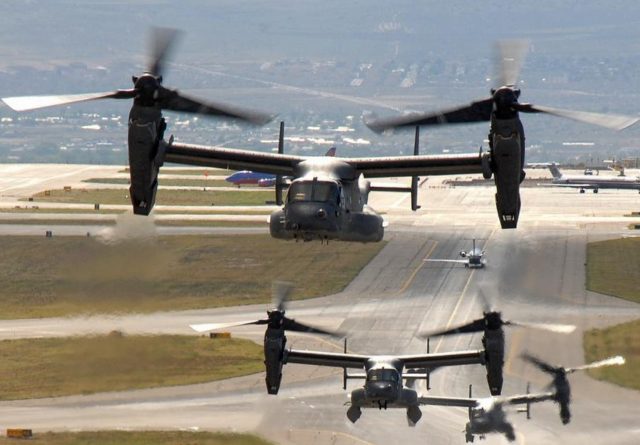A number of V-22 Osprey aircraft from the US Marine Corps, US Air Force Special Operations Command and US Navy will be facing flight restrictions over persistent issues with the aircraft’s complicated clutch system.
Based on a recommendation from the V-22 Joint Program Office, the services issued a time limit, via fleet bulletin, on the V-22 input quill assembly, starting February 3.
The assembly is an element of the proprotor gearbox, which houses the aircraft clutch. The imposed time limit will restrict flight on a subset of V-22s until the input quill assembly is replaced.
This recommendation is based on a progressive increase in hard clutch engagement events and ongoing engineering analysis, the services said.
A hard clutch engagement event occurs when the clutch, driven by the engine, releases from the rotor system and suddenly reengages, sending an impulse through the drive train, potentially causing damage.
In August last year, the US Air Force Special Operations Command grounded its fleet of 52 CV-22 Osprey rotorcraft indefinitely to examine the issue of hard clutch engagement on the aircraft, which had been slipping.
The service acknowledged that there had been four incidents involving hard clutch engagement during flight since 2017.
Two crashes in 2022 resulted in the deaths of nine US Marines. The first crash occurred in March 2022, when a US Marine Corps Osprey crashed near Bodo, Norway, during exercise Cold Response. The second one took place in June, with five Marines losing their lives as the aircraft crashed near Glamis, California.
Following the crash in California, the navy ordered a “safety pause” to review risk-management practices and conduct training on threat and error-management processes.
The fleet bulletin from earlier this month identifies aircraft with input quill assemblies above a predetermined flight-hour threshold and the requirement to replace that component. Once replaced, the aircraft will return to flight status.
Due to operational security concerns, the services did not release the specific assembly flight-hour threshold and the number of aircraft affected.
The joint program office is exploring 24 initiatives, such as data mining, laboratory and flight testing and hardware redesign, that fall along 4 lines of effort (analyze, identify, mitigate, eliminate). These efforts provide the information required to inform short-, mid- and long-term solutions. It was a result of these efforts that helped identify and implement the time limit for the input quill assembly.



























